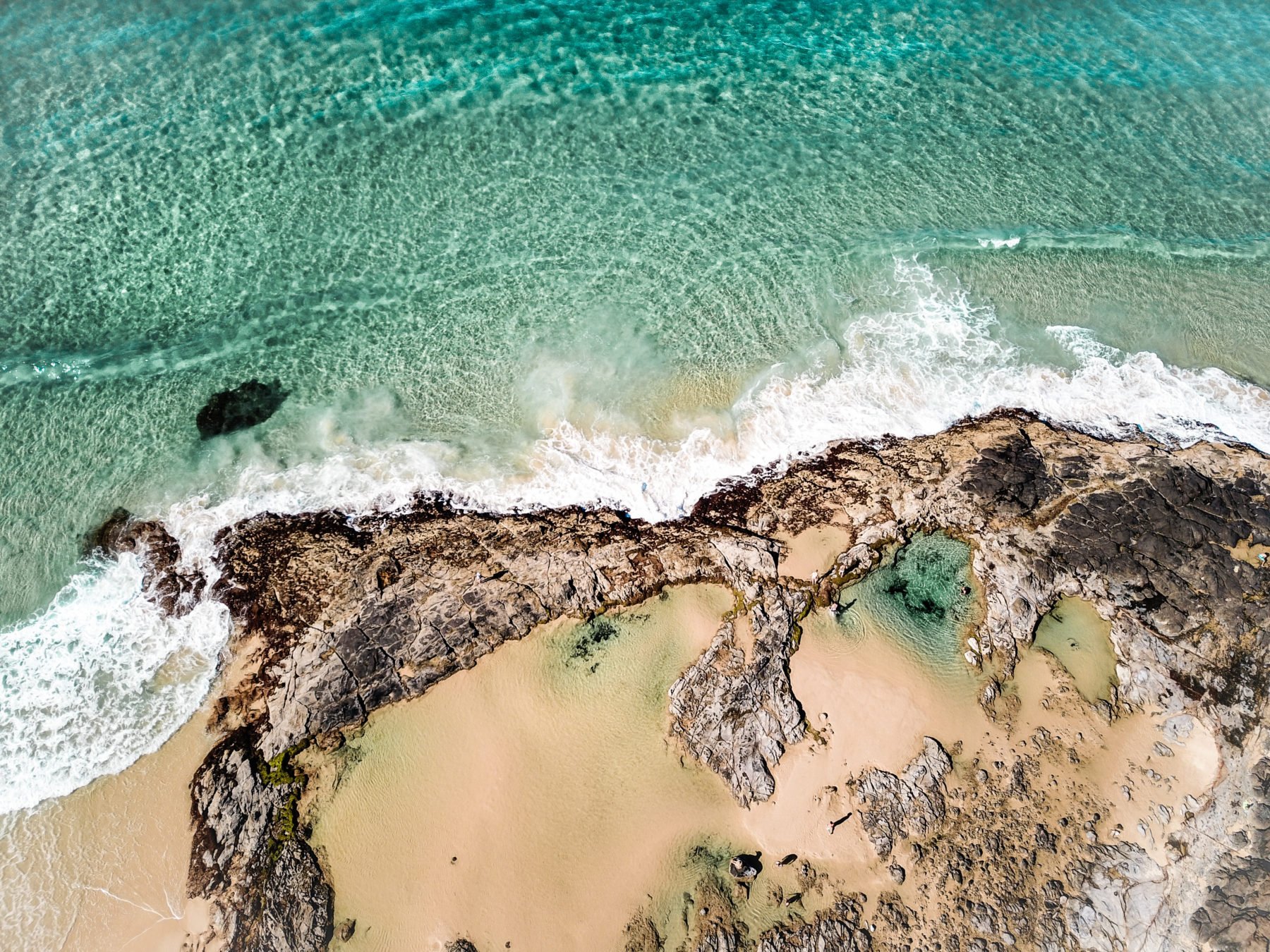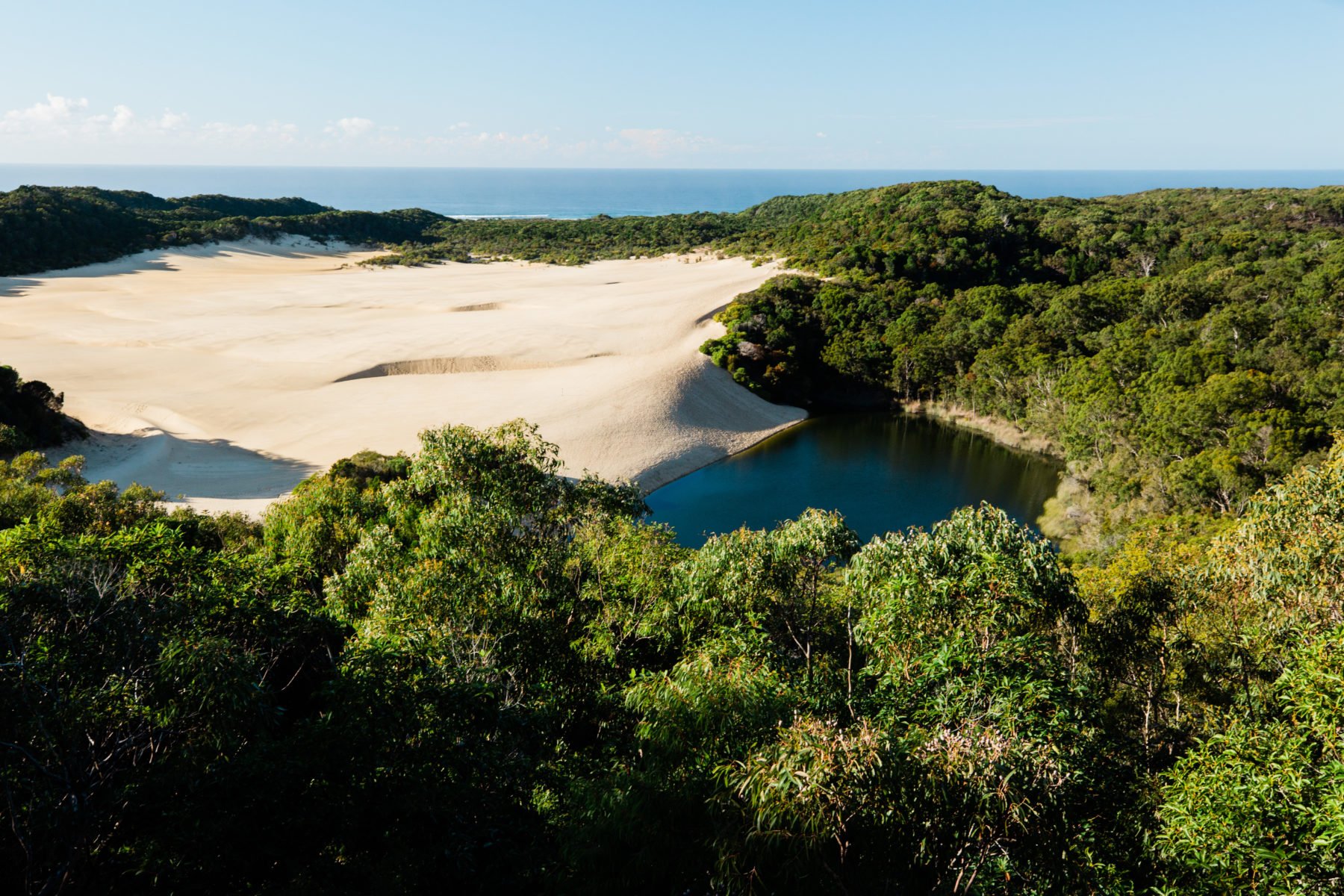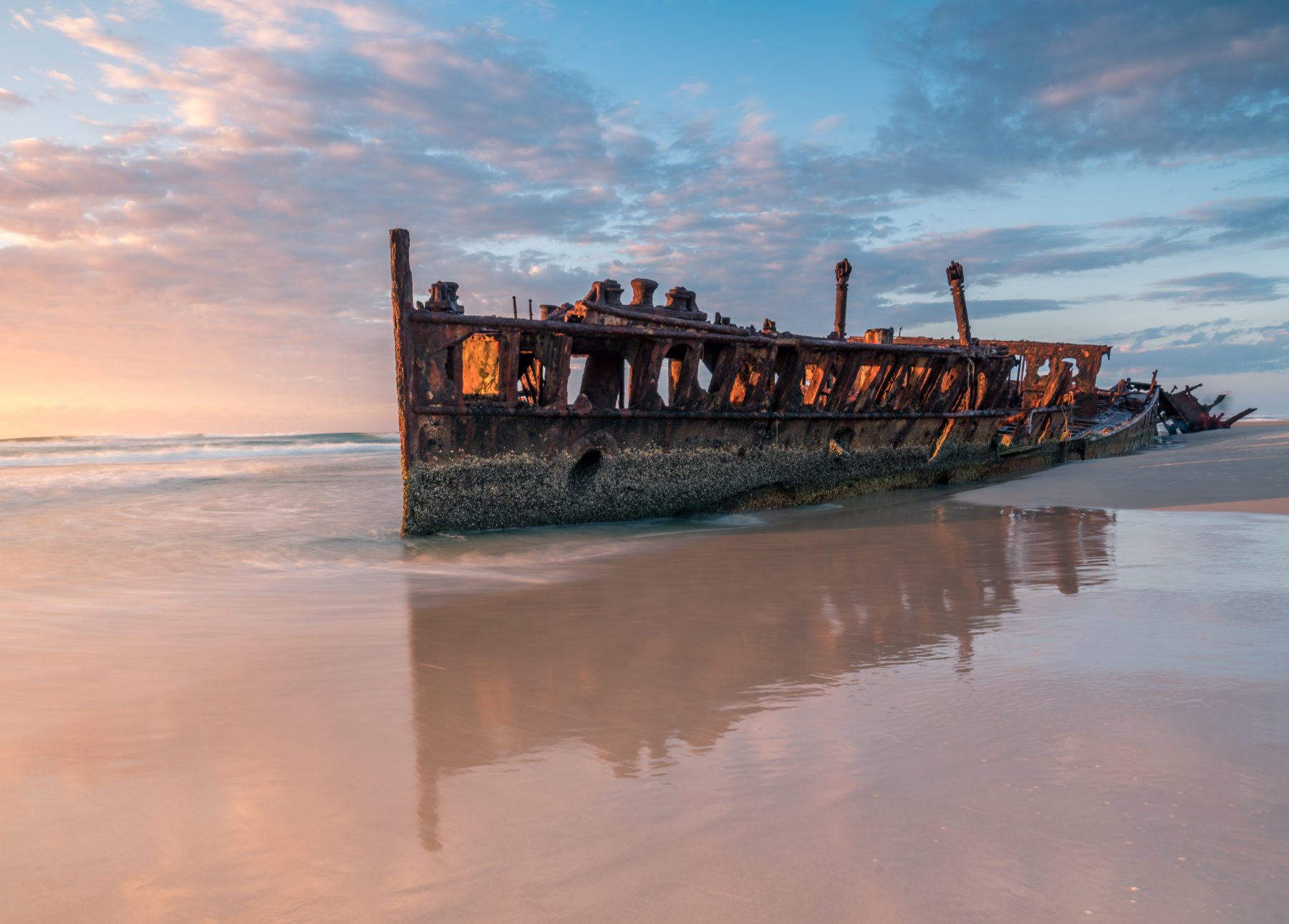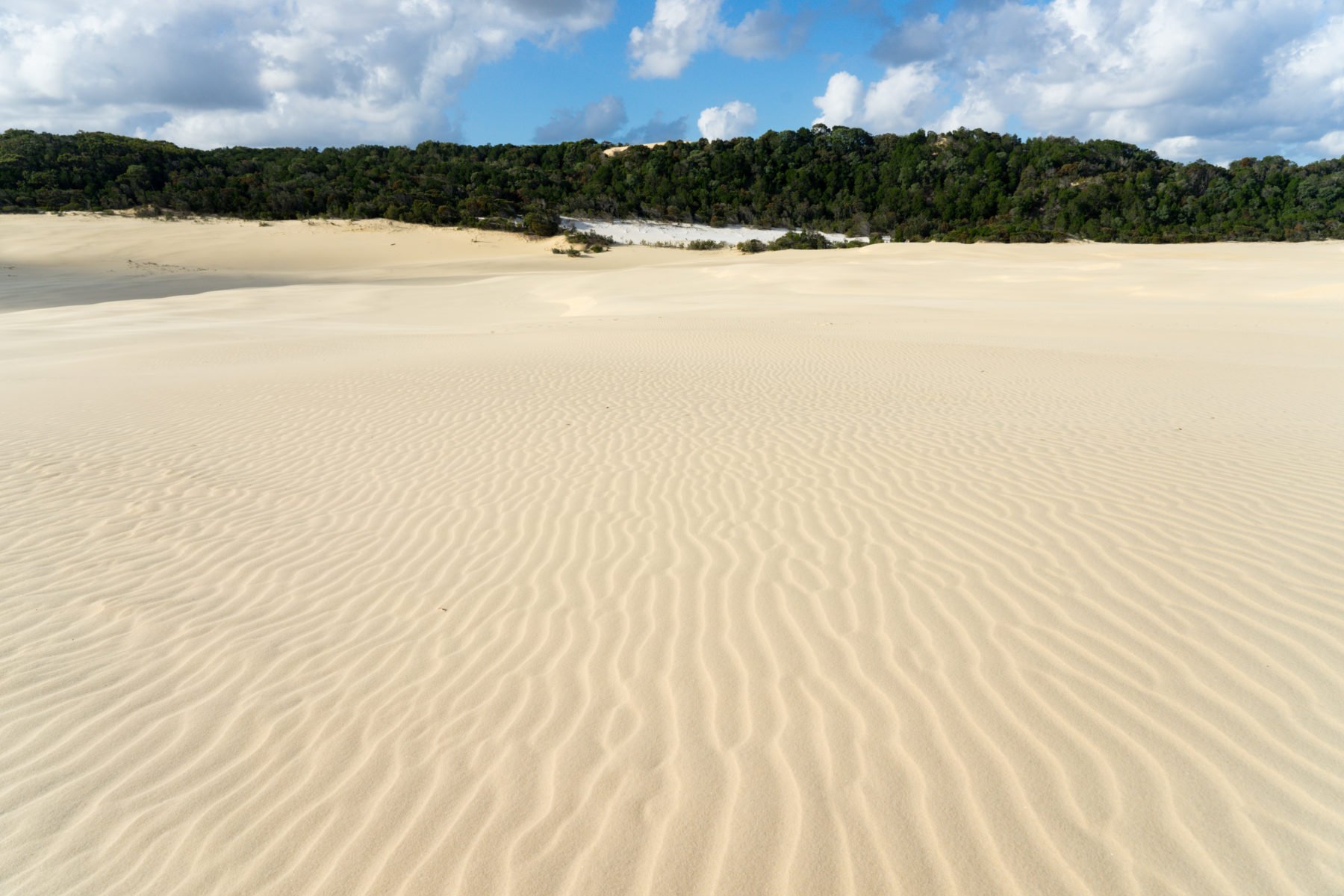K’gari is calling

I’m standing, barefoot, on the white sands of K’gari Fraser Island, bailed up by a red crab. It’s ninja stance – one claw out-thrust attacking, one defending – makes it clear I’m encroaching on its sacred space. So I turn, about face, and follow my footsteps back along the beach, yet another spectacular stretch of this World Heritage-listed island. It’s day three here and I’m convinced – with its pristine lakes, rare rainforests growing on sand, and exuberant wildlife, including whales, dugong, freshwater turtles, the country’s purest wild dingoes and half of Australia’s bird species – that this is paradise. And don’t even get me started on the water. It’s stunningly clear, like an aquamarine pool, which makes easy work of spotting a green turtle as it pops up for air and a gaggle of dolphins shooting through the shallows.

Wildlife on Fraser Island
FOR THOUSANDS OF YEARS, the Butchulla people who lived on the world’s largest sand island called it K’gari. It means “paradise” or “beautiful place”. From the air, it makes for a picturesque view, stretching 123km from north to south, scribbled with 1200km of white sandy tracks and dotted with emerald and sapphire lakes fringed by white sand. The 43 sandblows – where the wind-blown sand is overtaking the vegetation westward – are like creamy spots on its eastern flanks.
At its centre, the island rises slightly, reaching its highest point at 244m Mt Bowarrady. There are six main distinguishable dune ridges running north–south, the oldest in the west being some 700,000 years old, and the youngest in the east about 40,000 years. The sheltered waters of the surrounding Great Sandy Marine Park support thriving populations of marine creatures, many of which are easily seen from the air.
Fraser Island lies at a 45° angle from the coast and runs north-east almost to the continental shelf, forming Hervey Bay. Apart from the Great Barrier Reef, it’s the most prominent feature on Australia’s east coast. In the waters surrounding it there are Indo-Pacific dolphins, Bryde’s whales, melon-head whales, false killer whales, and several species of dolphin – in-shore bottlenose and pelagic bottlenose.
Hervey Bay is also vital to Australia’s 14,000 east coast humpback whales – it’s estimated about half of the population stops off here from July to November each year, on their way south from the breeding grounds to feeding areas in Antarctica. You can see them, too, in the sea surrounding K’gari.

Indigenous significance along the Fraser Island Great Walk
About 90km long, the Fraser Island Great Walk track runs from Dilli Village to Happy Valley, via such iconic spots as Lake McKenzie, Lake Wabby and the Valley of the Giants. But there are also 90km of other tracks that wend across the island.
Queensland Parks and Wildlife Service (QPWS) rangers are tasked with maintaining the tracks and significant Indigenous sites, while also looking for new ones. They are uncovering plenty of old signs in the bush – indicators of scar trees and other symbols from the Butchulla people, including markings on scribbly gums and smooth-barked apple.
Lake Wabby was a men’s initiation area – where boys became men. Today, 11m deep and tucked in beside the Hammerstone Sandblow, it’s one of the most stunning spots to visit. And further up 75 Mile Beach (or “back beach” as the locals call it) is perhaps the island’s most iconic historic spot – the rusting derelict of the Maheno. Washed ashore in a cyclone in 1935 while being towed to Japan, the grand old liner has been through the ringer, including being used for bombing practise in WWII.

The beauty of K’gari
Fraser Island is definitively beautiful. The lakes, the beaches, the rainforest – all of it. It’s nature’s paradise. It gets under your skin.
And perhaps no more so than at the beautiful spot where Eli Creek pours 4.2 million litres of crystal-clear water out to the ocean each hour – refreshingly cold and purified after some 75 years of passing through sand. And just 100m upstream, too, under the pedestrian walkway, where two tiny swallow chicks tweet from a nest, and fish swim through the gin-clear creek.
This is paradise. Yes indeed.

Book your K’gari 3-day getaway
The perfect Queensland bucket list experience is here! Enjoy time exploring both coasts of the world’s largest sand island, on one eco adventure to suit all travellers. Start your getaway in style, with a pre-night stay at Kingfisher Bay Resort. Relax on island time and enjoy full access to the resort facilities, in preparation for your two-day 4WD tour. Led by your expert local guide, tick off all of the favourite Fraser Island locations including the crystal-clear Lake McKenzie, and the towering rainforest of Pile Valley. PLUS, uncover some of the destinations lesser known but equally spectacular spots, such as the hidden oasis of Lake Wabby.
Find out more about Queensland’s #1 bucket list adventure today on a small group, guided 4WD eco adventure with Fraser Explorer Tours.
Pre and post tour accommodation options:

